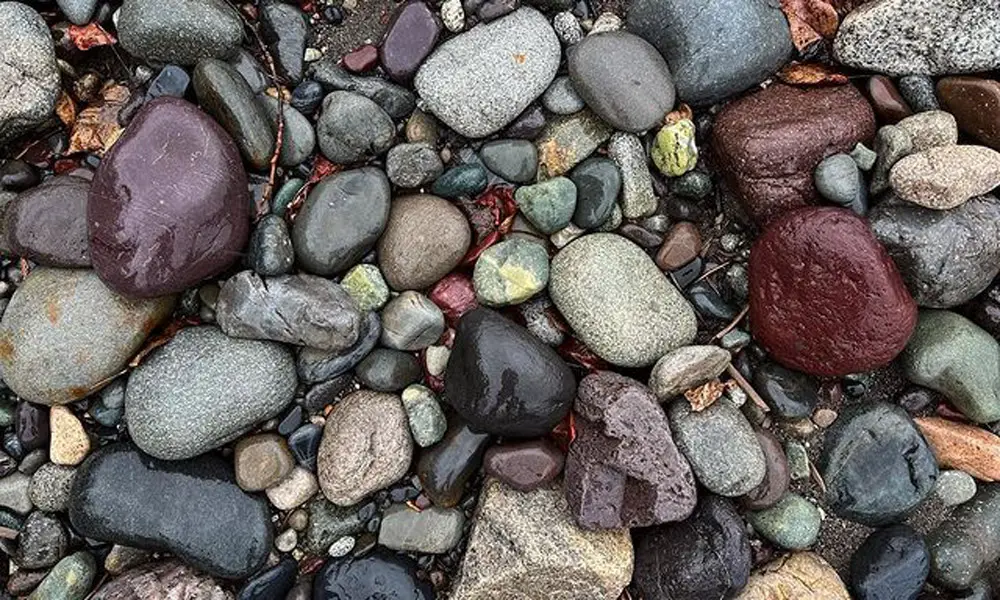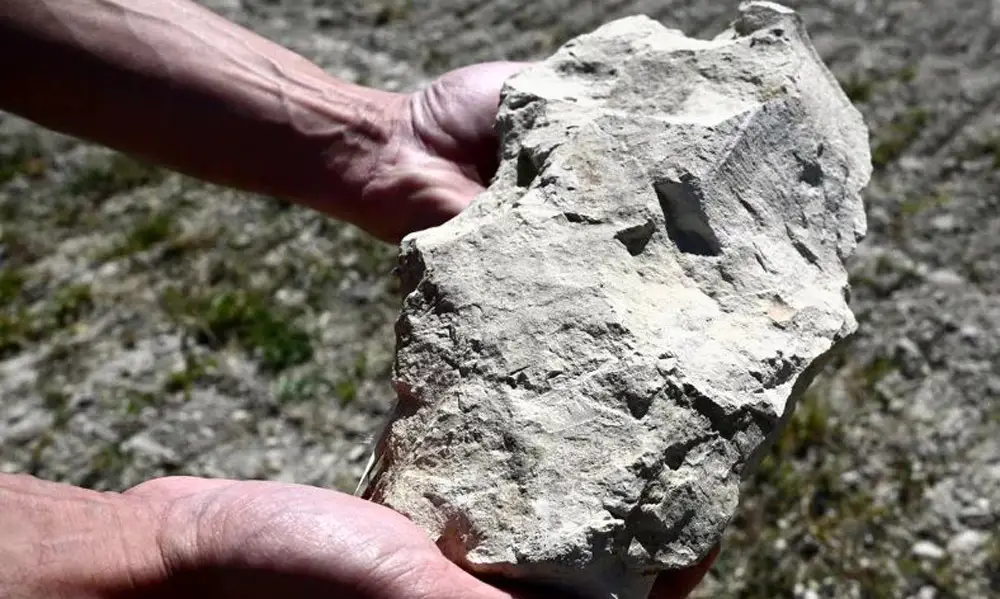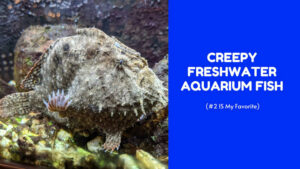River rocks are a budget-friendly way to add some pizzazz to your fish tank setup. They can be used in many ways to create an eye-catching display and provide beneficial properties to your aquatic pets.
However, not all river rocks are created equal, and there are a few things you should consider before adding them to your tank. This article will give you the low-down on everything you need to know about river rocks for aquariums!
Can I Use River Rocks in An Aquarium? Are They Safe?
You can use river rocks in the aquarium if you only choose the aquarium-safe types and take the time to test and clean them properly first and ensure they won’t change the water chemistry. Some river rocks can change the hardness and pH of the water, further harming your fish.
Read on to find more about the list of river rocks you should avoid and check the process to test and clean these rocks before adding them to the aquarium.
Most Common Type of River Rocks

River Rock often refers to an array of rocks that get polished and smoothened by the water movement. There are three major types of river rocks, igneous rock, metamorphic rock, and sedimentary rock, classified based on the location where the rocks occur.
Igneous River Rocks
Rivers in many volcanic areas have igneous rocks, and the two most common types can be basalt and granite.
Basalt is a fine-grained, dark-colored igneous rock that forms from the solidification of lava or magma, which is also the most widespread of all igneous rock and comprises 90% of all volcanic rock on the planet. This type of rock is rich in iron and magnesium.
Granite is an intrusive igneous rock with large crystals that form from the slow cooling of magma beneath the surface. It’s the most well-known river rock used in landscaping and aquariums.
Metamorphic River Rocks
Rivers located in areas where there are mountains often have metamorphic rocks. The three most common types are marble, slate, schist, and quartz.
Marble is a non-foliated metamorphic rock but is mostly made of calcite or dolomite. These carbonate minerals have the potential to raise the pH of the water in your aquarium.
Slate is a low-grade metamorphic rock that is formed from the shale or silts. Slate comes in a wide range of colors, including some majestic multicolored versions. Unfortunately, not all slate rocks are suitable for aquariums.
Schist is a foliated metamorphic rock that can form from many different kinds of rocks. It usually has large mica crystals that give it a shiny appearance.
Quartz is another metamorphic rock that is formed from quartz-rich sandstone. Quartz is very hard and has chemical resistance, making it a popular choice for both landscaping and aquariums.
Sedimentary River Rocks
Sedimentary rocks are composed of sediment. The most common types are limestone, shale, dolomite, and siltstone, which can form from the calcite skeletons of marine organisms.
Limestone is a common type of calcareous rock composed mostly of calcium carbonate. It tends to raise the pH, harden the water and reduce the acidity.
Shale is the most common sedimentary rock. Don’t confuse it with Slate. Slate is much more durable due to the metamorphic process.
Dolomite is a type of limestone that contains a high percentage of the mineral dolomite.
Siltstone is an unusual rock. It is a form of mudrock where water, wind, or ice deposit silt.
Sandstone is mainly composed of quartz or feldspar. However, you have to test it as it may contain traces of limestone.
What Type of River Rocks are Not Safe for Aquariums?

Aquatic life thrives around all types of rocks in nature, but only certain rocks are safe to create caves and hiding places in an aquarium. That’s because an aquarium is a micro-ecosystem that can’t dilute harmful minerals and toxins like nature can.
Based on the mineral composition, there are certain river rocks that you should not add to the aquarium to keep the water chemistry intact.
Calcites
These rocks interfere with the biological balance of the aquarium water by getting decomposed slowly. Calcites can release harmful calcium concentrations at a rapid face, thus posing a great risk to the species.
River Rocks From Contaminated Water
Rocks covered with contaminants or taken from polluted water can leach dangerous chemicals; hence, they are not considered safe for aquariums.
Rocks With Sharper Edges
Sharp-edged river rocks are strictly not recommended to add to the aquarium to protect your species from unwanted injuries. These can hurt their sensitive barbels or long-flowing fins. Opt for the smooth rocks and make your aquarium safe and fish-friendly.
The list of rocks that are not safe for tank spaces includes:
- Dolomite
- Limestone
- Marble
- Lava Rock
What Kind of River Rock is Safe for Aquariums?
Only those rocks that won’t disturb the biological balance of the tank are considered aquarium-friendly. The list of safe river rocks depends on the aquarium type.
While rocks for the fresh water tank can be easily accessible, it’s a bit trickier to find safe options for saltwater aquariums. Here’s a quick rundown of the rocks you can add to your freshwater aquariums.
- Lava Rock
- Quartz
- Slate
- Granite
- Sandstone
How to Test River Rocks for Aquarium?
Even if you think you have identified the safest rock for your fish tank, it is always suggested to carry out a test to be sure. One wrong choice can pose a great threat to your species while ruining your aquarium badly.
Aquarists can conduct plenty of tests to check whether the river rock they have chosen is worth adding to the fish tank or not. Here are some of them.
Crumble Test
It’s a good idea to carry out a crumble test on the large river rocks to make sure that they won’t get decomposed when submerged in the water. To conduct the test, take a container, fill it with old tank water, and soak the rocks for 24 hours. If they remain stiff even after 24 hours, the rocks are safe to add.
Carbonate Test
Carbonate fragments immediately pollute the water, thus posing a great risk to your tank species; hence, conducting a carbonate test is mandatory. Test the composition by sprinkling a bit of vinegar on the rocks and checking if the reaction occurs. If you are testing a calcite rock, you will find that the fizz on the rock’s surface, which indicates that it isn’t a safe choice.
Porosity Test
Conducting a porosity test is suggested only if you are looking for the rocks to boost notifying bacteria in the tank. Porous rocks have a rough surface and get dry at a slower pace.
How to Clean River Rocks for Aquarium?
Once you have conducted all the tests to find the aquarium-friendly river rocks, it’s time to know how to clean them before sterilizing. Here’s the step-by-step guide to carrying out the process.
- Fill the bucket with hot water and place the river rocks.
- Use a firm brush to scrub out the dirt or grime accumulated on it.
- If you are cleaning the porous rocks, take a toothbrush to carry out the scrubbing process.
- Ensure a rigorous scrubbing if you are cleaning a rock with plenty of holes as insects or larvae might be hiding in their crevices.
- Once you are done with the scrubbing, take out the rock from the hot water and place it into the bucket filled with clean water. Repeat the process until you clean every inch of the river rock.
Never use soap or detergent to clean the rock as their residue might be hard to remove, further making the water cloudy and causing harm to the species.
Where to Find River Rocks For Aquariums?
River rocks can be collected in the great outdoors. River basins, old riverbeds, ocean beaches, and stream banks are some of the good places where you can look for river rocks.
However, avoid collecting river stones from areas that have been recently developed or from those where runoff might have occurred. These sites might be contaminated with chemicals, oil, or other pollutants which can be transferred to your aquarium, making the water poisonous for the species.
Special rules and regulations protect underwater locations in habitat conservation, so adhere to them before collecting rocks from such sites.
Another safe and easy option is to buy river rocks from a pet store or an online retailer. Make sure to check the seller’s reviews and the product’s specifications before finalizing a purchase. Don’t forget to check the shipping policy as some of them might charge extra for delivering heavy rocks.
You can also ask the local landscaper or hardware store to get a few pounds of these rocks.
Conclusion
While river rocks are a great way of adding the custom charm to the tank, it is essential to make the right choice to protect your tank species. Make sure the rocks you select to add to the aquarium are fish-friendly.
Don’t be overconfident with your choices, and always conduct multiple tests for the maximum surety. Scrub the rocks well and safely add them safely to an aquarium.
If you have any tips or suggestions related to the article, feel free to share them in the comment section below. Also, don’t forget to share the article with fellow fish-keeping enthusiasts.





